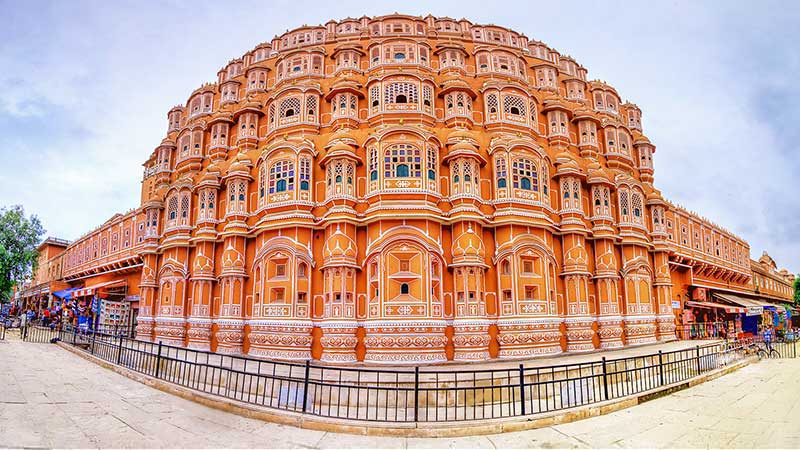
Hawa Mahal Jaipur
Built in 1799, by Maharaja Sawai Pratap Singh, the Hawa Mahal Palace (Palace
of the Wind , or Pink palace ) is one of the major landmarks of Jaipur (Rajasthan
- India). The structure is an interplay of red and pink sand stone, carefully
and painstakingly outlined with white borders and motifs.
Jaipur's signature building the Hawa Mahal, a multi layered palace, was
built by Maharaja Sawai Jai Singh II. Famous for it's Beehive like structure,
the Mahal is an interplay of red and pink sand stone, carefully and painstakingly
outlined with white borders and motifs. The palaces and forts of yesteryears
which were witness to the royal processions and splendors are now living
monuments, accepted quite naturally into the life-style of the people of
the "Pink City".
If one were to select the most outstanding of all buildings in the walled
city, or the most unusual, then the Hawa Mahal would easily stand out. Built
in 1799 by Maharaja Sawai Pratap Singh, this remarkable structure adjoins
the outside of the City Palace wall. Sawai Pratap Singh was a great devotee
of Lord Krishna and he dedicated this mahal to the Lord, its intricate exterior
wall looks like a mukut (crown), which adorns Lord Krishna’s head.
It overlooks one of the main street and lies sandwiched between more prosaic
buildings.
Structure
This five-story, pyramid-shaped structure is made up of small casements,
each with tiny windows and arched roofs with hanging cornices, exquisitely
modeled and carved. Its top three stories are just a single room thick but
at the base are two courtyards. It is a fifty-foot high thin shield, less
than a foot in thickness, but has over 900 niches and a mass of semi-octagonal
bays, carved sandstone grills, finials and domes, which give this palace
its unique fame. There is no definite record as to why Hawa Mahal was built,
only conjecture. It certainly was not meant for residential purposes. That
becomes clear if one were to view this unusual structure from the rear side.
There is a total lack of ornamentation on the inner face of the building.
The chambers are plain and more mass of pillars and passages leading to
the top story. It does not seem to be part of the same building. The Hawa
Mahal lives up to its name as one climbs up to the balconies and is almost
swept away by the cool breeze. Today, Hawa Mahal provides the visitor with
some excellent views of the city and a bird’s eye view of the Jantar
Mantar (a medieval observatory and an important tourist place in Jaipur).
The best time to view Hawa Mahal is sunrise when it catches the early morning
sun and is bathed in its golden light making it glow like a gem. The entrance
to this strange building is on the rear side.
Make Your Trip Now
MOST POPULAR PACKAGES
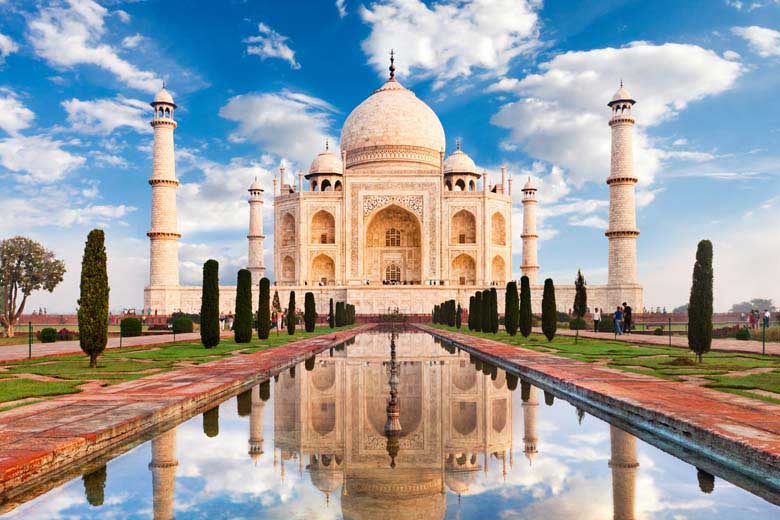
6 Nights / 7 Days
Golden Triangle Vacation Tour
India’s golden triangle is a tourist circuit which includes: Delhi, Agra (including the Taj Mahal), and Jaipur. These trips usually 7 days and do the trip as a circuit starting and ending in Delhi.
View Package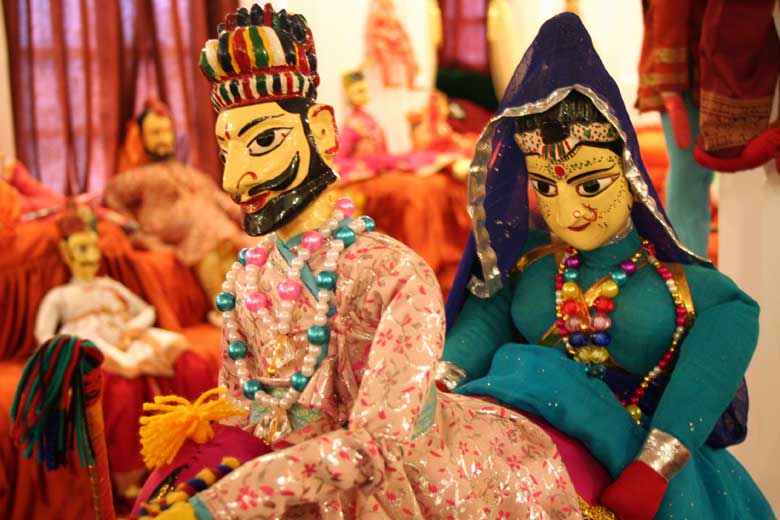
16 Nights / 17 Days
Rajasthan colorful Tour
Coloruful Rajasthan Tour is one of the most popular circuit of India. This tour package accommodates you to endure Rajasthan in all its different colors.
View Package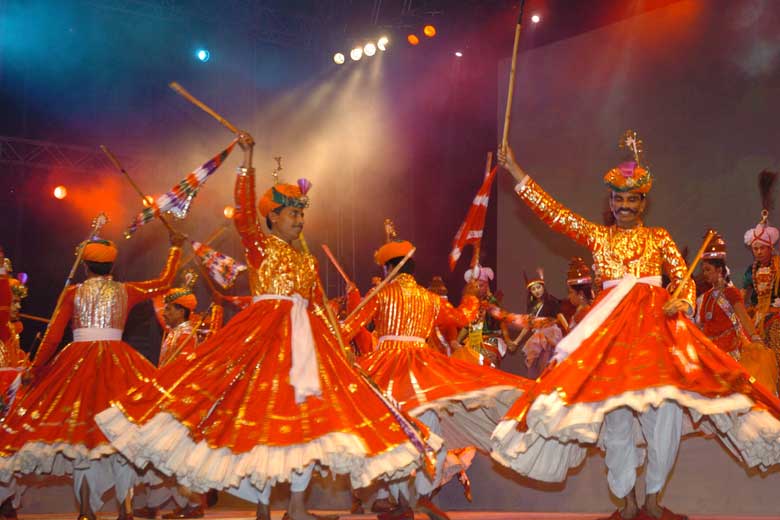
10 Nights / 11 Days
Rajasthan Cultural Tour
The Rajasthan state represents an unusual diversity in all its forms - people, culture, customs, costumes, cuisine, dialects and music and haveli's.
View Package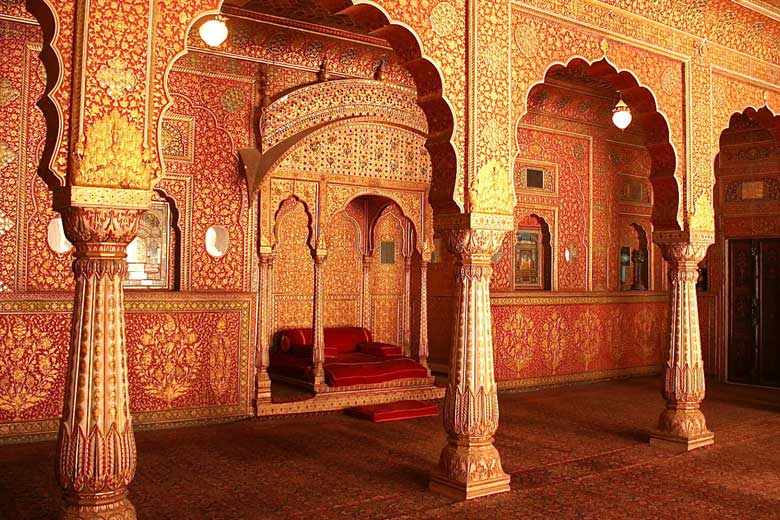
12 Nights / 13 Days
Rajasthan Fort & Palace Tour
Rajasthan is famous all over the world for its stunning forts and palaces that have been gloriously standing since decades in this princely state.
View Package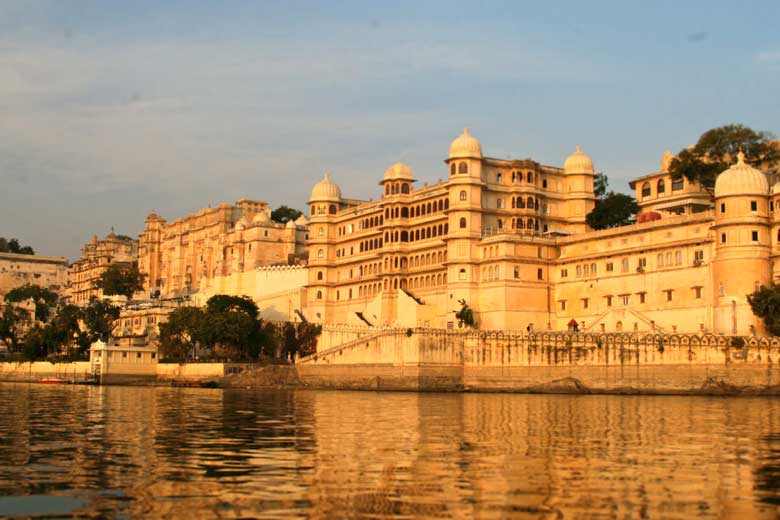
11 Nights / 12 Days
Rajasthan Heritage Tour
Rajasthan known as the "land of kings"provides some marvelous marks from the history in the form of its forts, palaces, mansions and haveli's.
View Package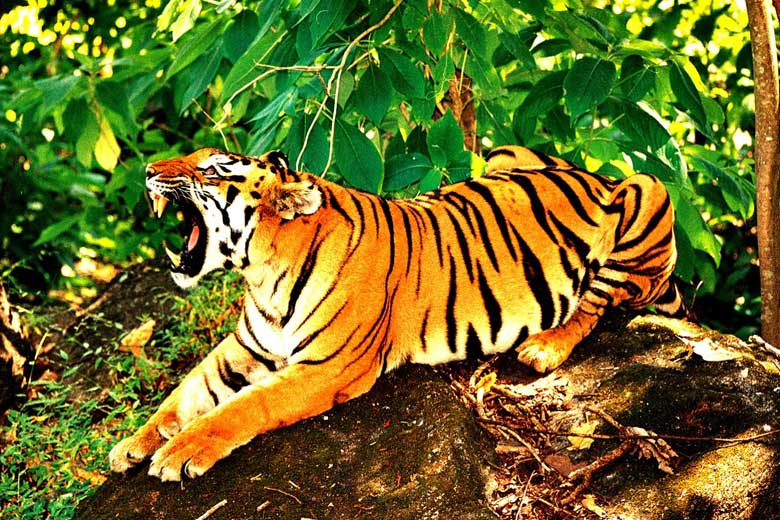
06 Nights / 07 Days
Rajasthan Wildlife Tour
The name Rajasthan has a habit of invoking the images of sun-bathed sand dunes of the Thar Desert, the rustic turban and mustache of Rajasthani men and women’s ghagra.
View Package
 Gujarat Toursim
Gujarat Toursim IATO - Indian Association of Tour Operators
IATO - Indian Association of Tour Operators +91-9811175768
+91-9811175768
